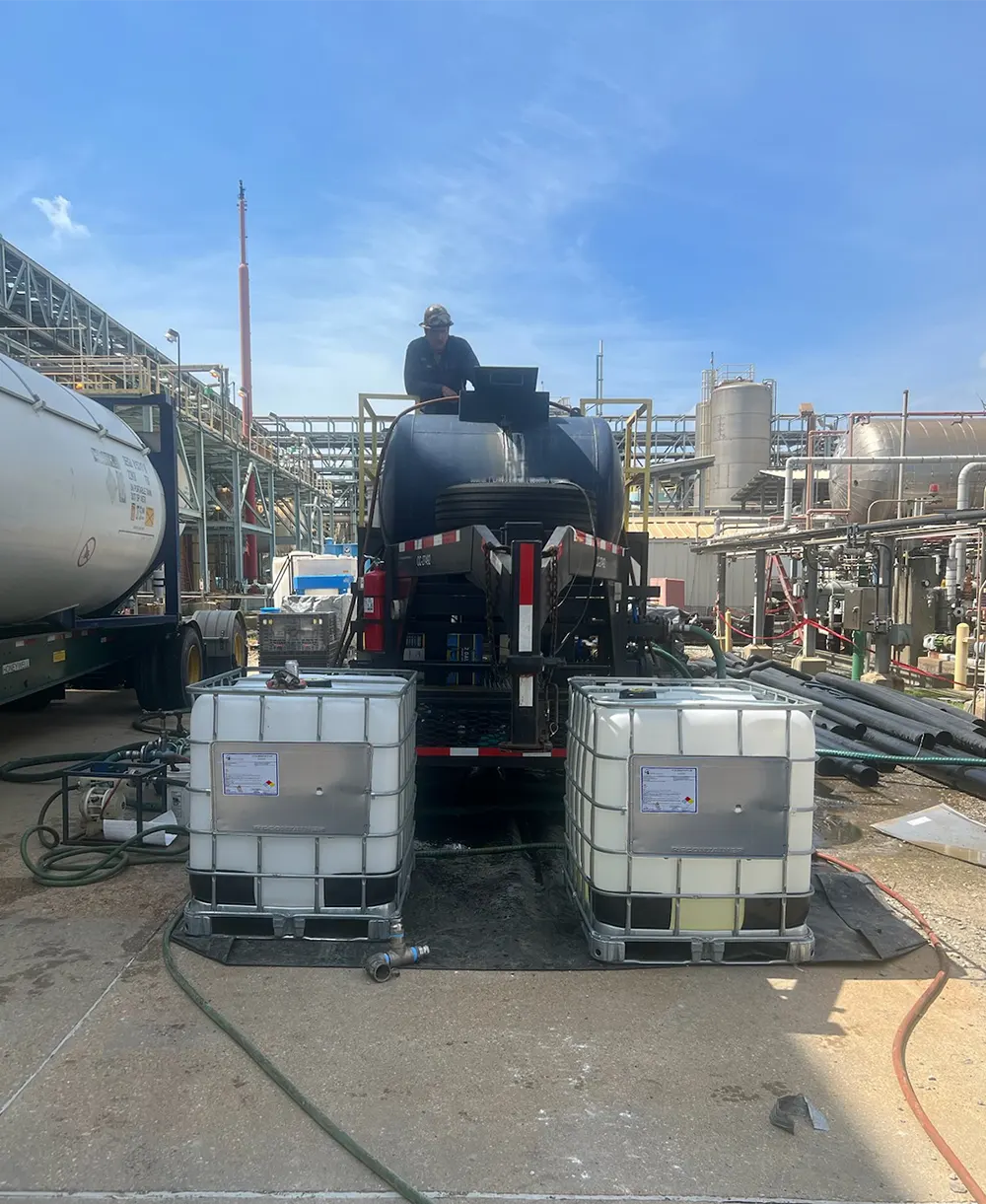Online Cleaning

An online cleaning process allows for uninterrupted equipment operation, reduced cleaning costs, and extended equipment operating longevity, making it an ideal solution for systems with parallel flow capabilities to maintain efficiency and cleanliness without a shutdown required
Online Cleaning with CC-900: CC-900 is a powerful solvent-based desludging agent, designed for the removal of heavy hydrocarbon and non-pumpable, organic chemical deposits commonly found in industrial process systems. It works efficiently while the system remains operational, minimizing downtime and maximizing productivity. Here’s how the process works:
1. Injection of CC-990: CC-900 is introduced into the system, where it breaks down deposits such as asphaltenes, coke, and polymers. The solvent keeps the heavy hydrocarbon deposits in suspension after treatment, allowing them to be safely removed.
2. Rate Control: The injection rate of CC-900 is governed by the system flow and is regulated and controlled by the injection pump. This ensures optimal solvent distribution and contact time for effective cleaning.
3. Application Areas: This cleaning technique is primarily used on heavy asphaltenic end systems.
- Advantages No Downtime: The system remains operational during the cleaning process, eliminating costly shutdowns.
- Effective on Various Deposits: CC-900 excels at breaking down difficult materials like asphaltenes, polymers, and other heavy hydrocarbons.
- Most advantageous in systems where parallel flow is available to control flow rates. High Temperature Tolerance: Unlike water-based surfactants that degrade at lower temperatures, CC-900 remains effective in high-temperature environments, up to 704°C (1,300°F), without losing its cleaning properties.
Post-cleaning, the suspended materials are easily flushed out of the desired system and can be processed further downstream with no issues eliminating waste and disposal costs.
Recap: By using CC-900 in an online cleaning process, operators can maintain high system performance, avoid expensive downtime, and achieve effective removal of stubborn deposits like asphaltenes and other heavy ends material.

